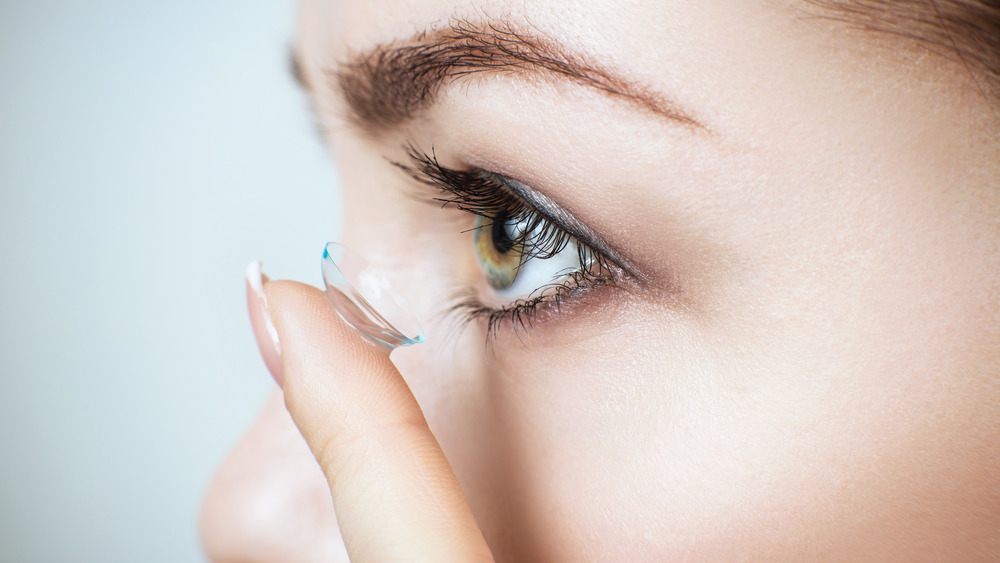Why You Should Take Out Your Contact Lenses Before You Shower
Most contact lens wearers have been there before. You're looking forward to a hot shower and want to get in as quickly as possible without the inconvenience of stopping to take out your contact lenses first. But skipping this important step puts you at risk for some serious complications, including eye infections, vision loss, and in rare cases, even blindness (via U.S. Food & Drug Administration).
According to the Centers for Disease Control and Prevention (CDC), water can cause contact lenses to swell, change shape, and stick to the eye. In addition to discomfort, this can lead to the lenses scratching the cornea, or the transparent dome that covers the front portion of the eye, making it easier for germs to enter the eye.
Furthermore, contact lens wearers are at an increased risk of keratitis, a condition characterized by inflammation of the cornea. Keratitis is often caused by germs such as bacteria, viruses, fungi, or parasites that invade the cornea. This is more likely to occur when people wear contacts for too long or do not care for them properly.
Why showering with contact lenses can be dangerous
Most water, including tap water, is not free of germs. In fact, a particularly dangerous germ called Acanthamoeba is commonly found in the water that comes out of our faucets and shower heads. Acanthamoeba can cause a very painful form of keratitis that is often difficult to treat. Symptoms of Acanthamoeba keratitis include eye pain, redness in the eye, blurred vision, sensitivity to light, and excessive tearing. The infection can also lead to serious complications.
A 2019 case study, published in the New England Journal of Medicine, details how a 41-year-old woman became legally blind after keeping her contact lenses in while showering and swimming. She received a diagnosis of Acanthamoeba keratitis after two months of symptoms. An eye test showed her visual acuity was 20/200 in her left eye, the threshold for being legally blind in the United States, according to the American Foundation for the Blind. Her right eye was not affected by the infection.
Protect your eyes with proper care of your contact lenses
Acanthamoeba keratitis is very rare, affecting about one or two per 1 million contact lens wearers in the U.S. each year, according to the CDC. Still, the consequences can be horrendous and people who do get it usually need a corneal transplant, which may not restore eyesight to its previous state. A year after her infection, the woman in the case study had eye surgery, which left her with 20/80 vision.
To prevent Acanthamoeba keratitis and other eye infections and complications, remember to remove contact lenses before showering, swimming, or going into a hot tub. Always wash and dry your hands before handling lenses and clean and disinfect them with solution. Never rinse or store your lenses in water. Finally, if water touches your lenses for any reason, remove them immediately and throw them away or clean and disinfect them overnight before putting them in your eyes again.



